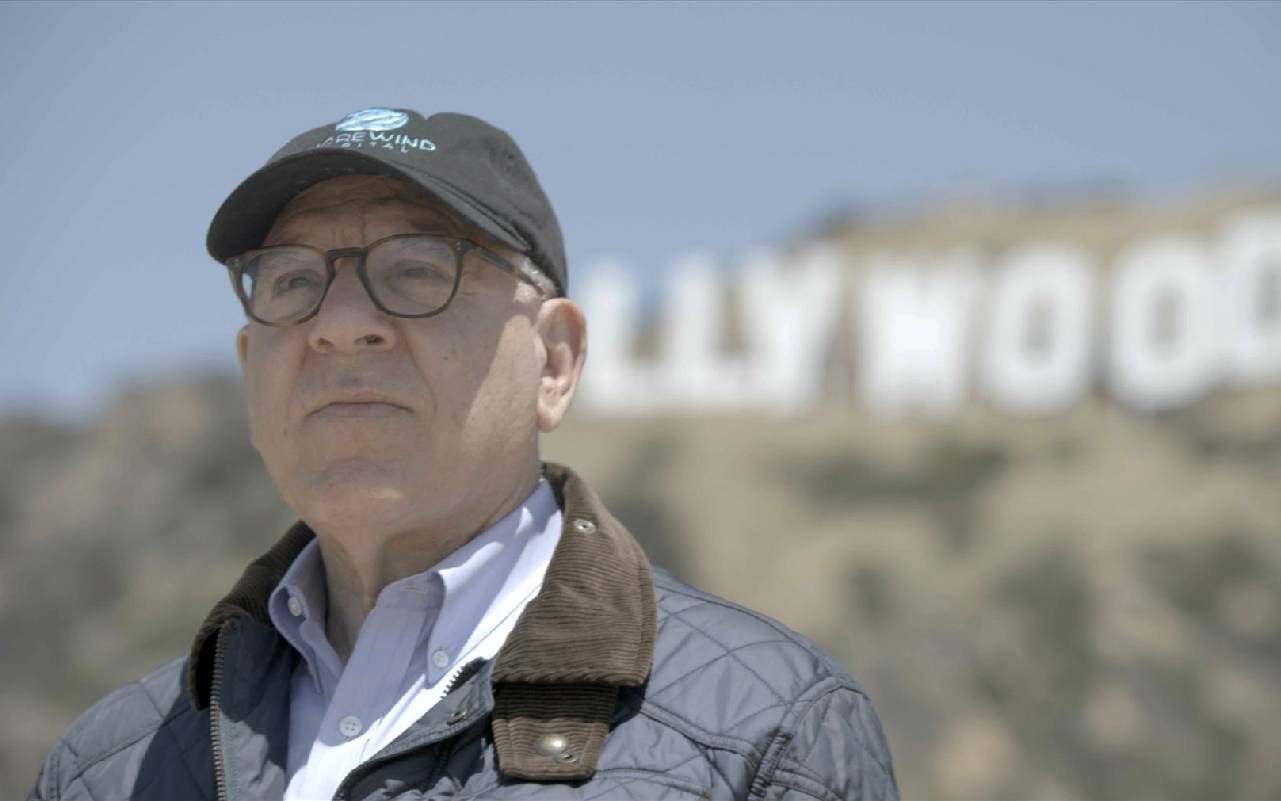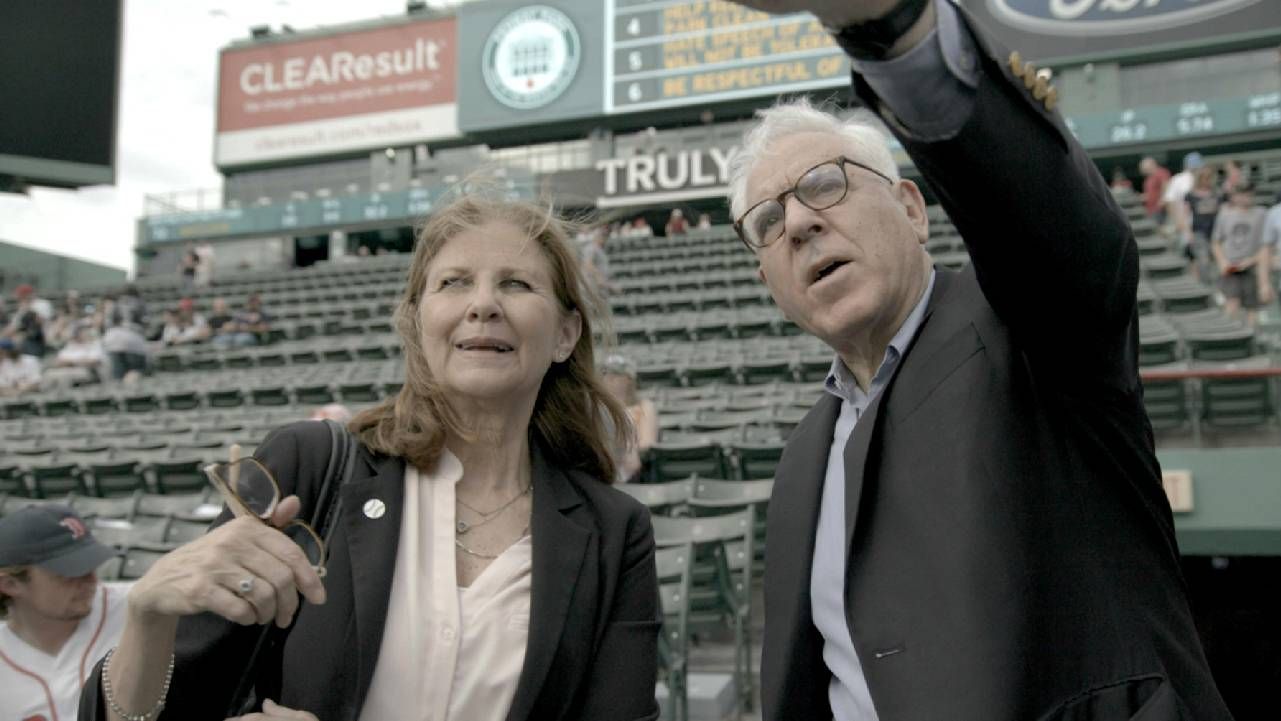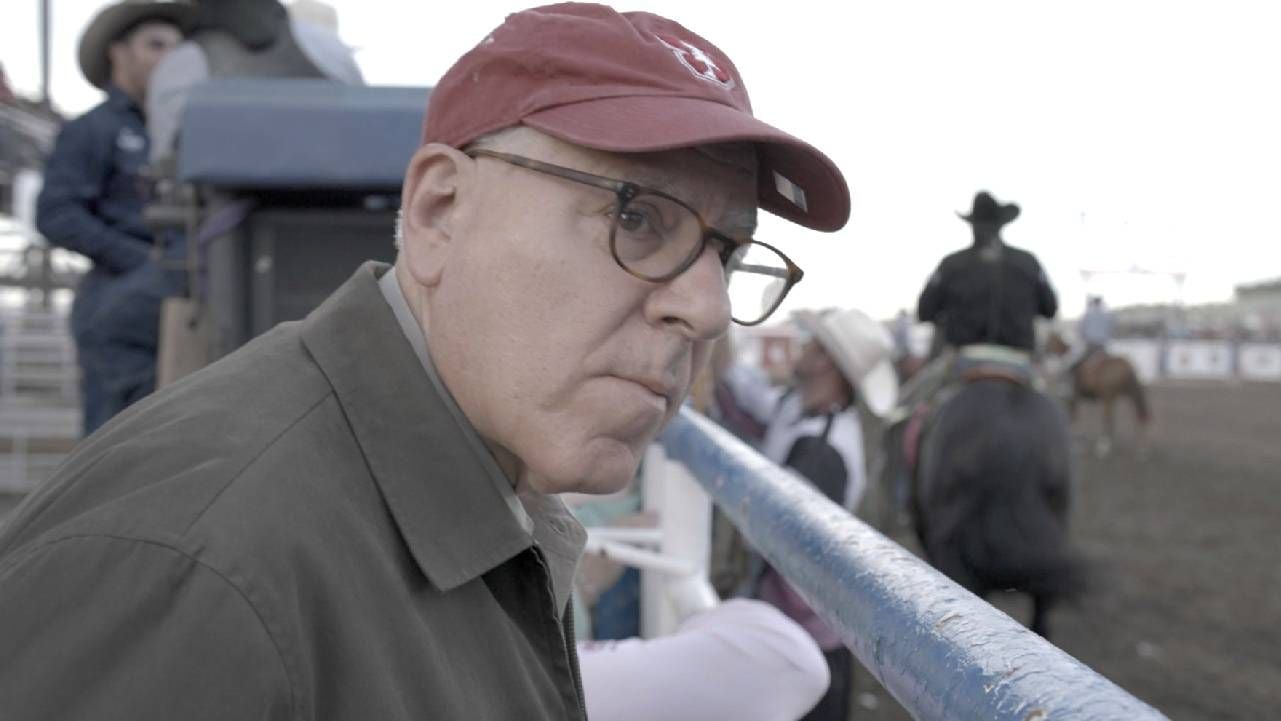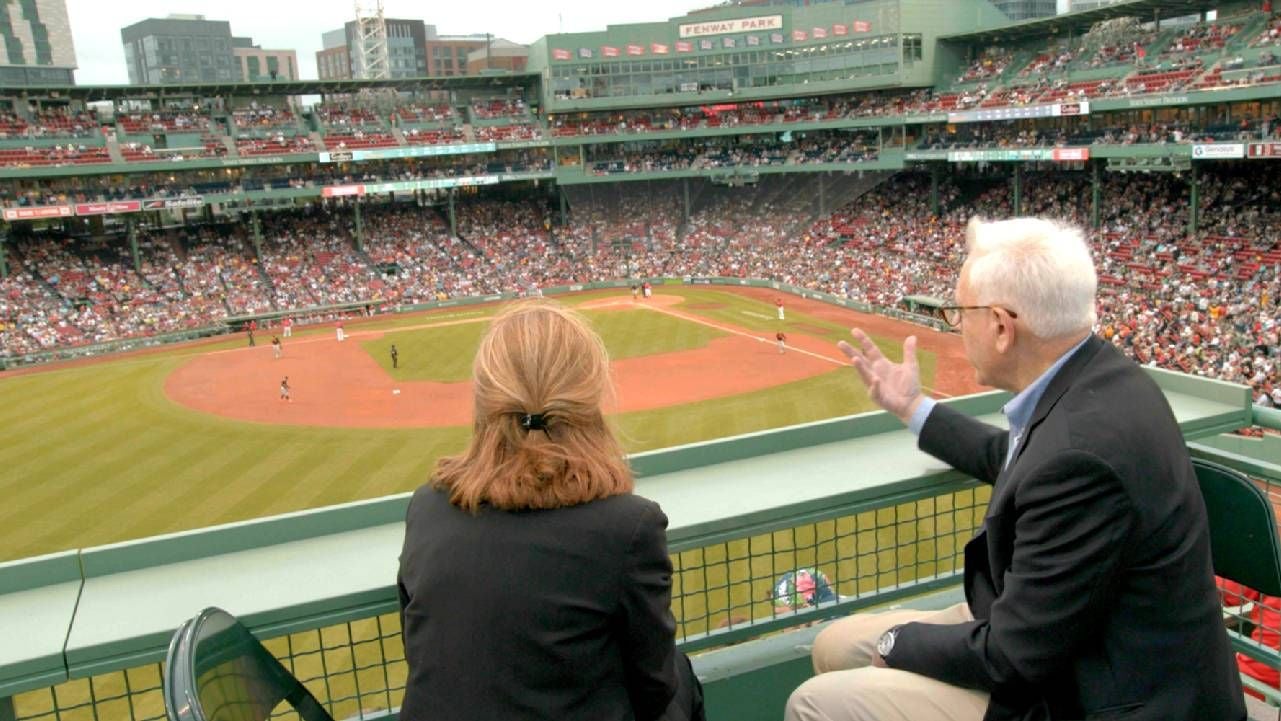An Historical Trip Around 'Iconic America'
A new eight-part PBS series surveys sites including Fenway Park, Stone Mountain and the Hollywood sign
The word 'iconic' seems to be thrown around too easily these days to describe actors, athletes, even cartoon characters. The dictionary says something is iconic if it is regarded as a representative symbol or as worthy of veneration. So when I heard that PBS would be devoting eight hour-long episodes to "Iconic America," I was both intrigued and curious what would be considered iconic.

As a lifelong Red Sox fan, I had no quarrel that the first episode was devoted to the oldest ballpark in the country, 111-year-old Fenway Park.
When I was growing up outside of Boston, too often the Sox were flirting with the bottom of the standings. But the well-manicured grass, the manual scoreboard and the 37-foot 2-inch left field wall known as the Green Monster still made losing a game a special experience. Fenway is quirky and intimate. The crowd, closer to the playing field than in most ballparks, has always been the 10th player in tight games.
As a lifelong Red Sox fan, I had no quarrel that the first episode was devoted to the oldest ballpark in the country, 111-year-old Fenway Park.
The remaining seven "Iconic America" broadcasts span both the country and its symbols: The Hollywood Sign, The Gadsden "Don't Tread on Me" Flag, The American Cowboy, The Statue of Liberty, The American Bald Eagle, Stone Mountain (often called the Confederate Mount Rushmore) and The Golden Gate Bridge.
Our guide is David Rubenstein, the 73-year-old co-founder and co-chairman of The Carlyle Group, the global investment firm, who has been a lifelong student of history and who, during the making of this series, went inside Fenway's scoreboard, climbed the hills above the Hollywood sign and witnessed the bull riding cowboys at the rodeo in Cody, Wyoming.
I spoke with Rubenstein this week as the second episode of "Iconic America" on the Hollywood sign airs Wednesday, May 3 on PBS at 10 pm ET. (Check local listings for details.)
Next Avenue: I suspect that the eight iconic America landmarks and symbols were not chosen at random. What's the story behind how they were picked?
David Rubenstein: We probably started with 40 or 50 and then narrowed them down. We were looking for a geographical cross-section. Some are on the West Coast, some in the south, some on the East Coast, you could argue one or more in the Midwest and Texas. And we also try to have some historical sites as well as some current sites that may be of more interest.
How would you define the mission of the series?
To educate people about American history in the hope that their appetites will be whetted about not only these symbols, but other things about American history they may not know much about. Americans just don't know much about our past and very little about our government. And the theory of our government when it was created was that you have an informed citizenry to make a better representative government. In recent years, we don't teach civics or American history very much at all. The result is we have a relatively uninformed citizenry compared to what would be ideal.
I've heard you say that it's important that Americans learn the good and the bad of our history. When I interviewed Ken Burns last fall, he also talked about the importance of sharing the American story, warts and all. But in the past few years, I've noticed that politicians seem to be stepping into the education space to control how much of the bad actually gets taught. What do we do about that?
Well, if I knew the answer to that, I'd be in Iowa, New Hampshire and South Carolina. No easy answer for sure. I would say that there's no doubt that political figures try to get attention with issues they think are going to be popular. In some parts of the political spectrum, railing against things that remind people that we had slavery in this country seems to be unpopular.
"In some parts of the political spectrum, railing against things that remind people that we had slavery in this country seems to be unpopular."
So, for example, when I put up the money to redo Monticello (Thomas Jefferson's home) and Montpelier (James Madison's home), I asked that those involved make sure that we point out that these men, for all their virtues creating the Declaration of Independence and Constitution, were slave owners. And I've been criticized in the New York Post and other places for being so woke as to remind people that Jefferson and Madison were slave owners, which I think Americans should know.
As a little kid, I listened to Red Sox games on a transistor radio underneath my pillow past my bedtime. And I appreciated that you treated Fenway Park as hallowed ground. But equally important is how in the Fenway broadcast, President and CEO Sam Kennedy, didn't mince words about the team's history: "The Red Sox have a shameful past with respect to race relations. We were the last team to integrate. And that is something that we live with forever. I think it's important to acknowledge it. And the last 20 years, we've tried to make sure that Fenway is welcoming to all of Boston and all of New England, all of the world." There aren't many sports teams or institutions that publicly own up to their past the way the Sox have. How important is it that unvarnished history is taught in the schools, the good and the bad?
I think it's important because what's the point of learning history if you don't know the good and the bad and make a judgment? While you're good, most people don't like to criticize themselves. Very rarely do you see that. In this particular case, the new ownership team that came in 2001, they're critical of the organization, but it was a change that they helped bring about. But they're not as upset about criticizing the previous owner, Tom Yawkey, who just didn't want to have African American players. They gave a "tryout" to Jackie Robinson. He wasn't quite good enough, they thought, to play Major League Baseball. And then they gave a "tryout" to another guy named Willie Mays. And they thought he also wasn't good enough. So you can imagine how the Red Sox would have done if they'd had Ted Williams and Willie Mays in the same lineup.

Of the four episodes that I screened, the one on the Gadsden "Don't Tread on Me" flag is a great example of how a flag and a slogan can be hijacked by groups who want to use it for a completely different purpose than it was originally intended.
Absolutely, the Gadsden flag is basically a flag that was created by Christopher Gadsden, a South Carolina businessman and slave owner and slave importer who had a flag that said, "Don't tread on me." The revolutionary fighters in the United States were saying to the British, 'Don't tread on me,' leave us alone. And it was a very effective symbol at the time.
In recent years, at the January 6th protests in Washington, D.C., and other protests against the federal government, many of those protesting held the same flag, "Don't tread on me." So the irony is that once it was used by people in this country to protest against another country, now it's being used in this country to protest against our own government.
I was also reminded over the last couple of days during news coverage of the writers' strike in Hollywood, how the Hollywood sign is used so ubiquitously on the news as a kind of visual shorthand for the land of film and celebrities. But your episode on the sign demonstrates how it had nothing to do with the movies when it was first erected.
At the time, homes were being built in the Hollywood Hills area of Los Angeles, and there were competing companies. One called Hollywood Land basically wanted people to come to their site and see the houses they were building. And so they erected a gigantic sign on top of the hill called Hollywoodland. When the houses were all sold, the word 'land' was taken down but the word 'Hollywood' stayed up. And then the word 'Hollywood' became symbolic of what moviemaking is all about.

The irony is that no movies are actually made in Hollywood, at least not anymore. They're made in Burbank or other parts of the Los Angeles area. Hollywood itself is basically for tourists, where Grauman's Chinese Theater is or where you can buy T-shirts that say Hollywood. But people who want to see movie stars are not going to Hollywood these days because they're not there anymore.
When you think back to all eight episodes of "Iconic America," were there any surprises that stand out?
"When you work in the White House for any president, you're always going to have a sense of history because you're working in the same places that people made history."
I'm not an outdoors person, so I didn't know that much about the American bald eagle. And I went all the way up to a remote part of Alaska to see some of the bald eagles. I just didn't realize that we had almost made extinct the American bald eagle as a result of DDT and other phenomena. Now we have 500,000 American bald eagles in this country. But we were down to 500 at one point. So I didn't really know much about them and I learned a lot.
You grew up in Baltimore and are a lifelong history buff. Do you remember when you first got the bug?
I remember when I was a little boy, John Kennedy, then running for president of the United States, drove past my neighborhood and I saw him. Maybe because of that, I got my appetite whetted in politics, government and history. And ultimately, I did get a job in the White House under President Carter. And I spent four years there. When you work in the White House for any president, you're always going to have a sense of history because you're working in the same places that people made history. And so from that moment on 40 plus years ago, it increased my interest in history.
That's why I tend to spend some time and money trying to rehabilitate historic buildings or buying historic documents to remind people about history, because I want them to see these documents in person or go visit these sites.

The buying of historic documents, the restoration of historic buildings are all part of what you call 'patriotic philanthropy,' as is this PBS series I suppose, trying to stimulate interest in our history. But how do you measure whether the financial investment and the time investment that you've put into all of these efforts are succeeding in getting Americans more familiar with their history?
In the business world, we have very good metrics of profit per share or earnings per share or just profitability or rate of return. So when you're in the investment world, you can pretty much use numbers to measure quite precisely how successful or unsuccessful you are. In the philanthropic world, there are no equivalent metrics. If five or ten years from today, people know much more about American history, as measured by various tests that people are given, or if people are going to see sites that are historic much more than they were before, maybe there's some progress.
At some point, maybe the experience of visiting historic sites or seeing historic documents won't be different than just looking at it on a computer slide. But today it is different. And therefore, if you attract more people to go to these historic sites, they might learn more about American history. It's a very uncertain process, but that's actually what I've been trying to do.

